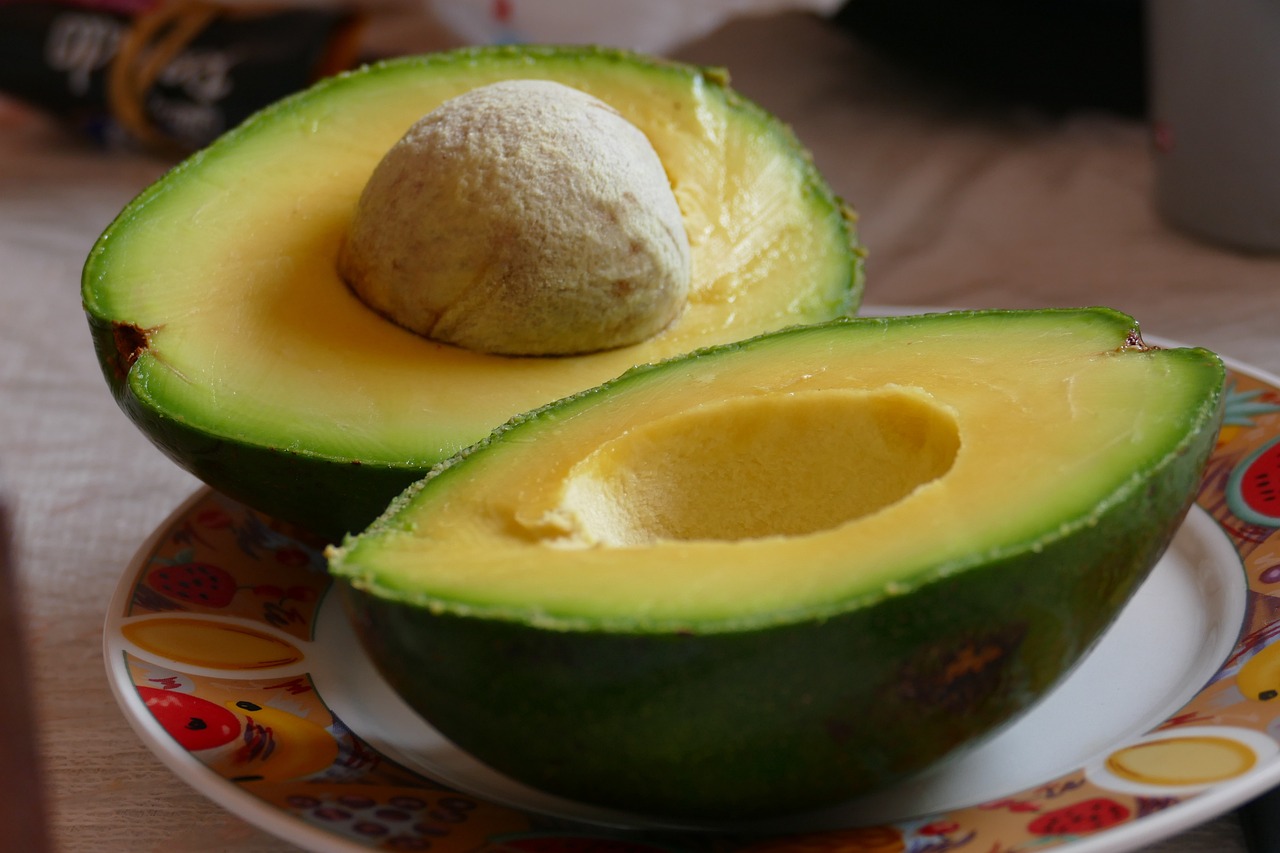
Table of Contents
The avocado is a flavorful and high-in-nutrition summer fruit that is also a great addition to many dishes. They are also used as a key ingredient in many beauty hacks and DIY projects. But did you know that avocados are very easy to grow from a pit?
Here is our guide on what you need to do to grow your own avocado plant from the pit. Let’s get started.
Steps to Growing Avocado from the Seed
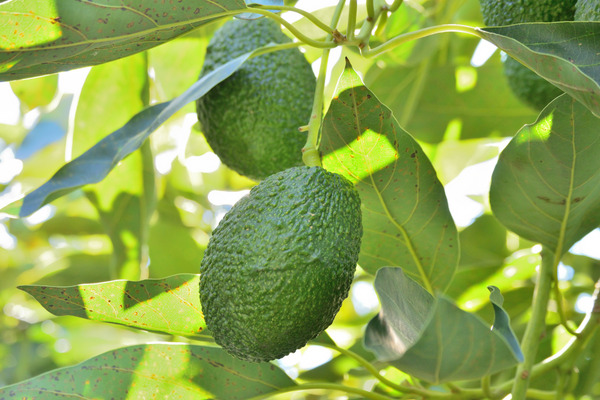
Here are the simple working steps to grow avocado from fresh pits at home. Use the pit once you have eaten an avocado. This will save you from buying avocado plants that can cost a fair bit.
1. Remove the Pit and Clean It
The first step is to remove the seed from the fruit carefully. Don’t cut it or remove the brown covering as it is the seed coat. It is good to wash the seed to remove all the fruit that could be on it. Or you could even soak it in water for a couple of minutes and gently rub off any fruit on the pit.
2. Find the “Top” End and the “Bottom” End
Every seed has a top side and a bottom side. The top is where the shoots grow, while roots start growing from the bottom.
It is important to find the top and bottom ends of an avocado pit. Some avocado pits are oblong, with the pointier end at the ‘top’ and the flat end as the ‘bottom’. While some are like perfect spheres, they still have a bottom and top. This step is very important so that you can place the right end to make the seed sprout.
Prick With Toothpicks
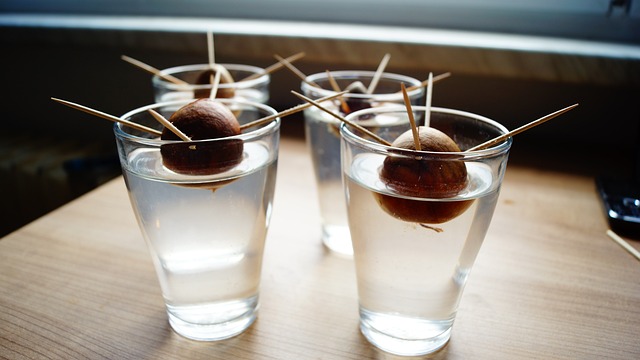
Once you find the bottom end, the next step is to just place it in water. Put the pit on top of a glass of water so that just the bottom side is in water and the rest of the seed is outside. For this, a simple way is to use three toothpicks and pierce the seed using these and wedge them firmly.
It is good to pierce the seed at a slightly downward angle and space them evenly around the circumference of the seed. These work like scaffolds and keep the seed resting stably on top of a glass of water. If the toothpicks don’t work for you, then you can look for other ways to balance the seed on top of a glass of water.
4. Place the Seed in a Container with Water
When you have pricked the seed using toothpicks, it is ready to settle on top of a glass of water. Put it in a sunny window. You may need to change the water from time to time, so put it in a clear glass so you could see when the roots start growing. It is good to change the water after five days or a week.
Changing the water regularly is necessary to prevent the growth of bacteria, fungi, and mold, which can hinder the little pit from sprouting.
5. See the Seed Sprouting
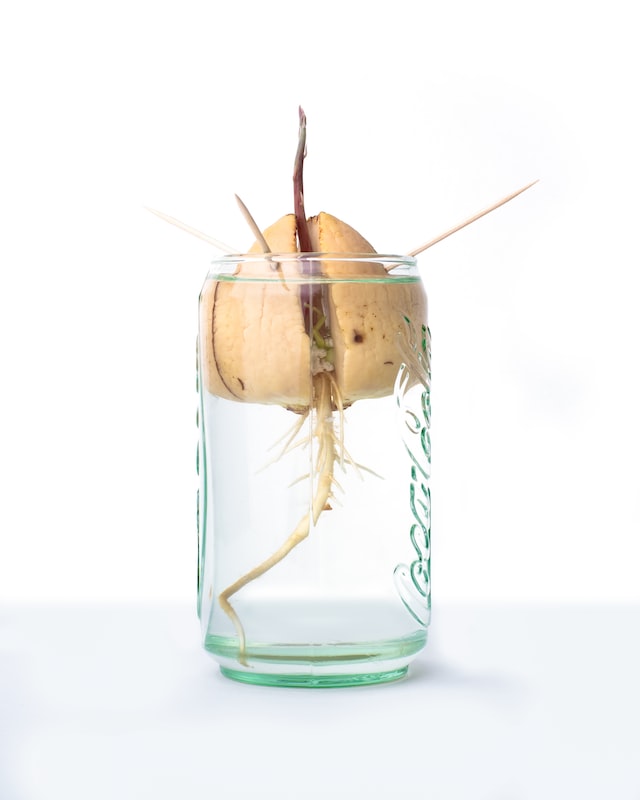
The next step is to wait and watch patiently as the avocado seed sprouts. It may take at least 8 weeks, so don’t lose hope if you don’t see any growth soon. These are the steps that avocado seeds follow while sprouting:
- The top part of the seed outside the water dries out and cracks. The seed coat or brown covering starts to slough off
- The crack becomes bigger and goes all the way toward the bottom part. You start seeing a tiny taproot emerging from the crack at the bottom.
- The taproot shows growth and may even form branches. After a few days, you will see a small sprout coming out of the top of the avocado seed.
A very important thing to note here is that never allow the water to dry out in the glass and the taproot to go dry. Since this will kill your avocado plant.
6. Repot the Plant
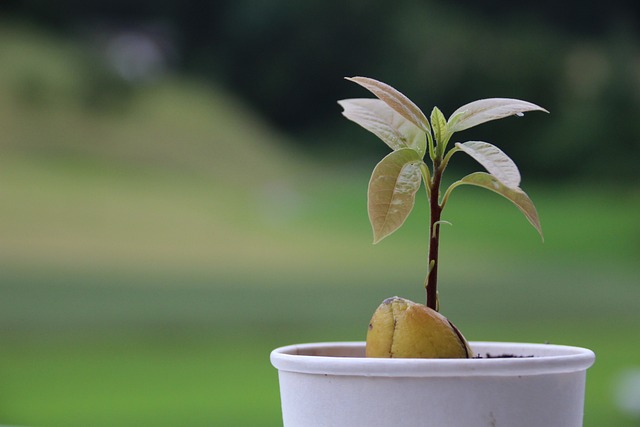
When the stem grows to about 15cm long, it is time to put the seed in the soil. To encourage new growth, cut back the stem to about 8cm and let it grow back to 15cm. Take a 25cm diameter pot and fill it with rich humus soil. Place the sprouting seed in the soil, with the upper half exposed and the roots completely buried in the soil.
7. Water the Plant
As the plant starts growing, water it regularly. Never overwater it, but always keep the soil moist, and occasionally give it a deep soak. If the leaves start to turn yellow, then this suggests overwatering. Don’t water the plant for some days till the leaves retain their green color.
8. Make the Plant Grow Bushy
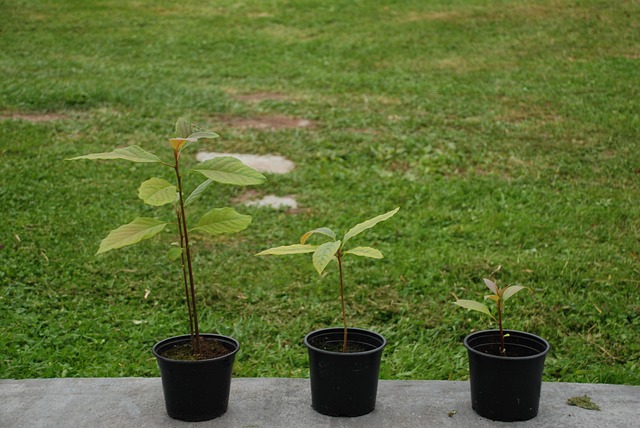
A good way to encourage bushier growth is to pinch off the two top sets of leaves when the plant becomes 12 inches tall. This makes the plant bushy and encourages the growth of more leaves and side shoots. Then when the plant grows another 6 inches, cut back the pair of the newest leaves on the top.
Care Tips for Avocado Plant
Now you know how to start growing your avocado plant from a pit. The next thing is to learn about the maintenance tips to properly care for the plants to keep them growing healthily and happily.
· Light Requirements
The young potted avocado trees should not get too much sun as the leaves could get sunburned. Avoid placing them in direct sunlight, so better to put them indoors near a sunny window or outdoors in a shady place when the temperature is 45 F or warmer than that.
· Temperature and Humidity
In warm regions, avocados should be grown outdoors. They grow best in places with medium or high humidity and temperatures between 60 F and 85 F.
· Soil and Water Requirements
If growing it indoors, plant it in potting soil and water it once a week. But if growing it outside, in places with warm and dry weather, you should water it more often.
To retain moisture when growing outside, mulch the tree from 6 inches away using cocoa bean hulls or coarse bark. You should not often water the plant deeply so that the roots can grow long in search of water. Grow the plant in well-draining garden soil and water the new plants once every 5 to 10 days.
· Fertilizer Needs
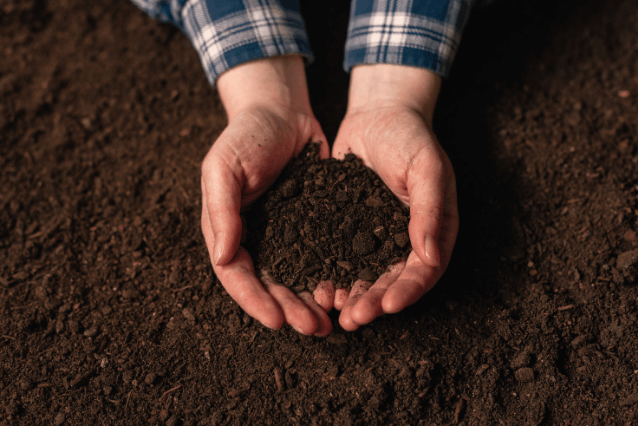
Use a nitrogen fertilizer and fertilize the plant every week in summer. The growth is dormant or minimal during winters, so don’t fertilize the plants in the cold months. Choose a fertilizer with zinc components as well since avocados also need small amounts of zinc for their growth.
· Pruning
Avocado plants need regular pruning to promote bushier growth. Whenever the plant grows 6 inches tall, pinch off the latest pair of leaves. When the stem grows as tall as 12 inches, cut it to make it 6 inches tall. When further growth makes it 18 inches, cut it back to 12 inches to make the plant bushier with side shoots and more leaves.
· Repotting
If you are not growing the plant on the ground, but in a container, then remove it gently when it grows big and repot it in successively larger containers. You should go up to 2 inches in diameter of the pot at a time.
· Pests and diseases
Indoor avocado plants face far lesser pest issues as compared to the ones grown outside. The outdoor plants can be infested by mites, caterpillars, borers, thrips, and other beasties. Observing the plant carefully can help detect these and then you can use a technique to get rid of them.
How Often Does an Avocado Tree Bear Fruit?
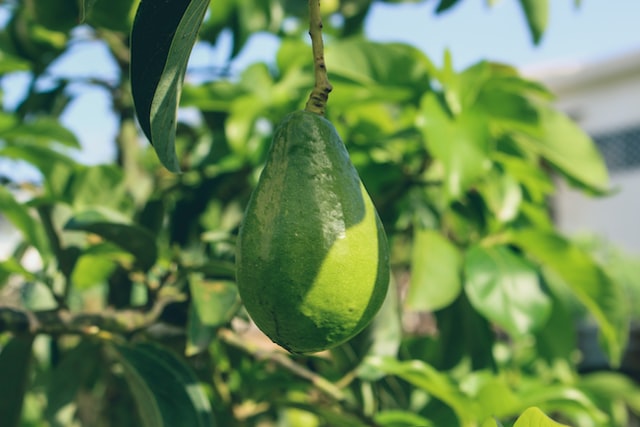
Many people are concerned as to when their avocado tree will produce fruit, or whether it will ever produce any fruits or not. You should be patient as they can take between 5 and 13 years to produce fruit and not all trees bear fruit. Most indoor trees never have fruits.
Wrapping Up
Avocados are a great summer fruit that can be easily grown from their pit. It is important to remember the steps in locating the top and bottom ends of the pit so that you can place it correctly in water to sprout.
Once you have your avocado tree growing, you must be patient to see fruits as it does take years. By following the care and maintenance tips you should soon be rewarded with fruit and if not, at least your avocado plant will add greenery and shade to your outdoor garden.






